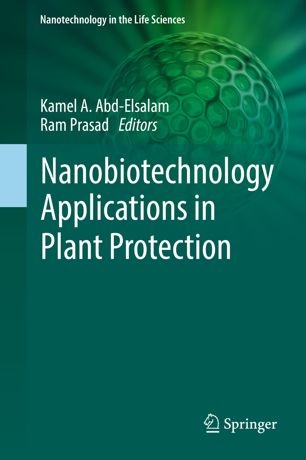

Most ebook files are in PDF format, so you can easily read them using various software such as Foxit Reader or directly on the Google Chrome browser.
Some ebook files are released by publishers in other formats such as .awz, .mobi, .epub, .fb2, etc. You may need to install specific software to read these formats on mobile/PC, such as Calibre.
Please read the tutorial at this link: https://ebookbell.com/faq
We offer FREE conversion to the popular formats you request; however, this may take some time. Therefore, right after payment, please email us, and we will try to provide the service as quickly as possible.
For some exceptional file formats or broken links (if any), please refrain from opening any disputes. Instead, email us first, and we will try to assist within a maximum of 6 hours.
EbookBell Team

4.8
84 reviewsNanotechnology can target specific agricultural problems related to plant pathology and provide new techniques for crop disease control. Plant breeders and phytopathologists are needed who can apply nanogenomics and develop nanodiagnostic technologies to accurately advance the improvement process and take advantage of the potential of genomics. This book serves as a thorough guide for researchers working with nanotechnology to address plant protection problems.
Novel nanobiotechnology methods describe new plant gene transfer tools that improve crop resistance against plant diseases and increase food security. Also, quantum dots (QDs) have emerged as essential tools for fast and accurate detection of particular biological markers. Biosensors, QDs, nanostructured platforms, nanoimaging, and nanopore DNA sequencing tools have the potential to raise sensitivity, specificity, and speed in pathogen detection, thereby facilitating high-throughput analysis and providing high-quality monitoring and crop protection. Also, this book deals with the application of nanotechnology for quicker, more cost-effective, and precise diagnostic procedures of plant diseases and mycotoxins. Applications of nanotechnology in plant pests and disease control, antimicrobial mechanisms, pesticides remediation and nanotoxicity on plant ecosystem and soil microbial communities are discussed in detail. Moreover, the application of specific nanomaterials including silver, copper, carbon- or polymer-based nanomaterials and nanoemulsions are also discussed. Crops treated with safe nanofertilizers and nanopesticides will gain added value because they are free of chemical residues, decay and putative pathogens for human health, sustaining the global demand for high product quality.